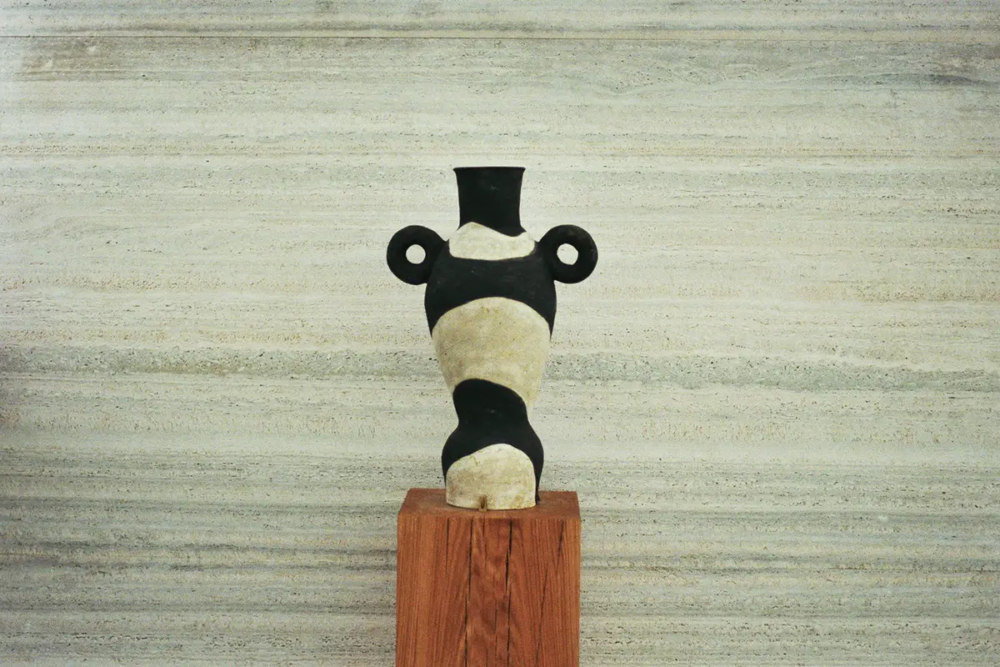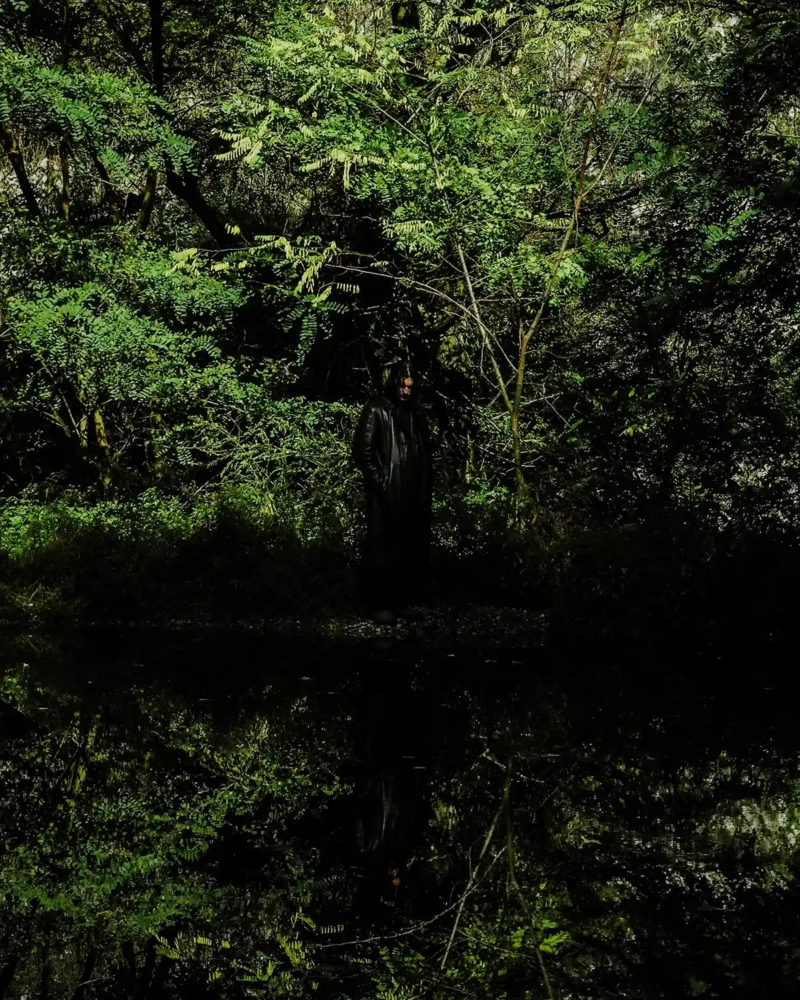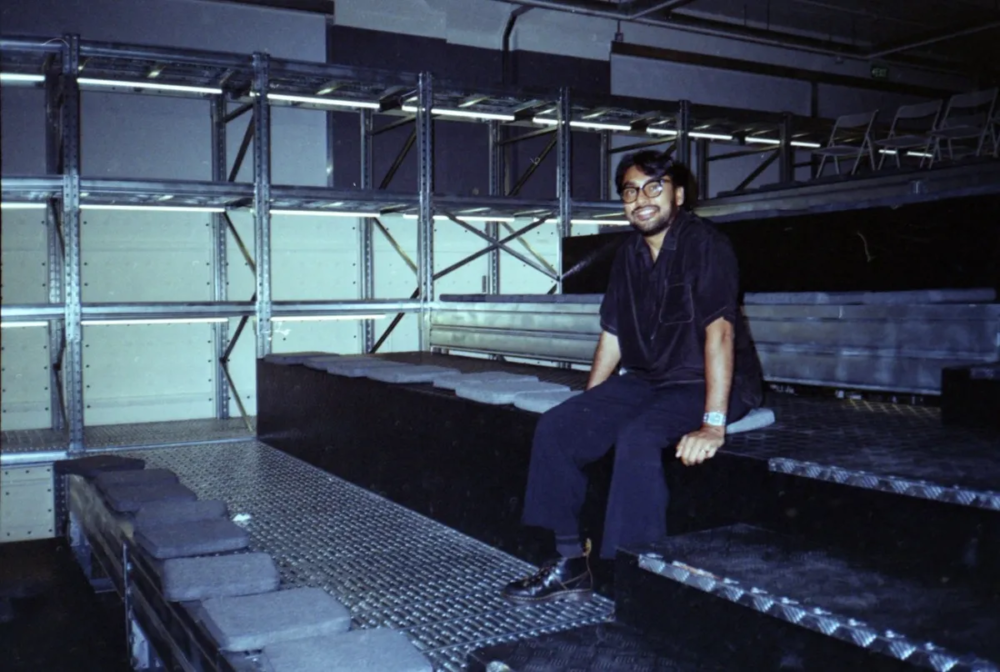
Ottolinger and womanity: ready to unwear
«We felt something was missing for women in the fashion market». Ottolinger duo, Cosima Gadient and Christa Bösch, forms new vocabularies of the feminine and the thrust towards womanity
Ottolinger designers Christa Bösch and Cosima Gadient: clothes are becoming a contemporary socially relevant display for artists
Are fashion brands becoming the new art curators? The unbreakable bond uniting the art world and the fashion sphere is not revolutionary. Singers entertain the shows, we repeatedly witness performative moments, and costume exhibitions unfold in the museums. Just as culture debates the relevance of garment creators, fashion designers examine new talents to infuse through their shows. Clothes are becoming a contemporary socially relevant display for artists.
Ottolinger borrows less from fashion and more from art or literature. The duo’s collaboration with artists comes from a recognition of shared narratives. They form a duet with painters, having featured landscape prints from Julien Nguyen and works from Cheyenne Julien or Georgia Gardner Gray.
A curator is someone who is culturally relevant or purposeful, someone adding value to the general perception. Since art isn’t something that can or even aspires to be massively produced, garments can embed artworks as meaningful yet commercial objects. In Ottolinger’s case, the brand uses garments as media season after season, eventually fostering a cult of showcasing artists. Because part of the artist’s value comes from a museum’s or curator’s initiative to create an exhibition around their work, Ottolinger is directing recognition and worth towards the people collaborating with them.
About womanity and womanhood. Ottolinger collaboration with Rafal Skoczek and Julien Nguyen
For their Pre-Fall 2023 collection, Ottolinger collaborated with Rafal Skoczek, a Polish-born, Zurich-based artist whose work decorated black mash with orange minimal motifs portraying gothic crosses or insects with a contemporary allure. Their 2020 ready-to-wear featured prints developed by Georgia Gardner Gray and Lucie Stahl. The first is a New York-born and raised artist investigating phobias and tensions associated with womanhood. She introduces a theatrical painting, where society’s roles and mechanisms are hypnotized. Lucie Stahl has a different grasp on creation, with a more reality-tuned view of details. Flowers, weeds, ropes, cans, her subjects always appear tightly close but redefined in terms of colors and structure.
Ottolinger’s pact with the American painter Julien Nguyen overlapped with the brand’s fall 2020 line. «Reality occurs only in the intimacy of understanding and being understood» is how the artist portrays the entanglement between people, a similar inclination toward contouring communities that the Ottolinger girls share. They welcomed artists with clear voices and well-countered styles like Cheyenne Julien who reveals black womanhood in quirky yet intimate portrays.
New York Fashion Week, Cosima Gradient and Christa Bosch
Cosima Gradient and Christa Bosch didn’t grow up surrounded by fashion. They share a devotion to the harmony mimicking nature synchronized with the urge to alter it. Both Swiss, the two designers met during their studies at the Basel School of Design. Shortly after graduation, they decided to steer up Ottolinger, taking the name of their studio’s neighbor in Berlin. What put the Berlin-based brand on the map was their VFiles 2016 Ready to Wear collection they still fondly recall. Being selected in the top four to present at the New York Fashion Week opened up a new conversation on the duo’s designs. «We received the phone call when Cosima was sick. They said, This prize will change your life».
Antifashion is an inherited request for cultural expansion. With each evolution comes the need to question, disrupt, or recklessly contradict it. In the generational trauma of fashion, some brands take on the duty to fill the gap where the industry doesn’t speak to ‘others’. The dispute between beautification and detraditionalization continues, restlessly raising the individual above community values. Ottolinger has created a recognizable style language. Their approach involves a juxtaposition between romanticism and dark satire, faithfulness and realism.
Womanity – Ottolinger Pre-Fall 2024
The two designers trademark on introducing edginess to traditional garments, including wedding gowns, eyewear, or wrong-fitting trousers, making them dystopian. While their earlier collections were experimental, in recent times, Ottolinger has moved towards more structured garments that can serve as must-have wardrobe pieces with a twist. Cosima Gradient and Christa Bosch are questioning the body’s most displayed parts, the proportions, and the layers. They convey a synesthetic sensation with a study of how the body can present itself. Materials and colors play the most relevant part in Ottolinger’s aesthetic. Velvet and glossy leather, fur against narrative mesh, macrame and printed knitwear, textures liquece over the gaze tirelessly.
In one of their first collections for the 2019 Spring Ready to Wear show, the duo confessed to «building a new fantasy story with its own society». Nowadays, they are more conscious of the consumer and the general request. The brand’s Pre-Fall 2024 collection was primarily a wardrobe collection, focusing on layering, demonstrating how all the Ottolinger pieces can be worn and combined. «We incorporated new materials and colors with a commercial approach, but the collection mainly consisted of styles we had done before». The duo aspires to create pieces that can resist the test of styling.
Women about women. Womanity and Ottolinger. Reality-anchored sensibility is an act of post-fashion
Ottolinger’s gesture of redirecting wearers toward a reality-anchored sensibility is an act of post-fashion. Just as society as a whole touches upon entangled and multidisciplinary crises, styles and trends can’t endlessly sustain their efforts on consumers’ need to consume. «If you do things that are not naturally beautiful, you raise these questions. Your brain functions differently when you look at our creations». While healing and comforting, beauty doesn’t leave enough room for drastic discussions, it doesn’t question what we can occupy in a renewed era. «It’s intriguing when you need to wrap your head around what it’s not always the world’s honest, most appealing state».
Cosplaying and reinventing oneself has never been as hastily as in a rapidly digitalizing era. «Dressing up now, it’s like going into a character» explains the Ottolinger designers. Gender, as much as identity, in fashion becomes a curatorial gesture rather than a design process. Where the intent remains to produce vibes and attitudes, sartorial codes tend to lose their imprint. Ottolinger has been exploring the idea of designing unisex pieces for some time now, doing fittings with men for a couple of seasons without yet incorporating them into any of their shows or photo shoots, even while receiving requests from men’s buyers or a male market. «We never thought too much about women or men, but the whole system in fashion makes you decide if you want to show in women’s wear or men’s wear calendar. Or if you want the women’s buyer and the men’s buyer. Eventually, they always ask if it’s women’s or men’s wear. On every online store, you have to choose your gender first».
A catalog of misbehaved, collaborating with stylist Ursina Gysi for their catwalk shows. Partnered with names the heights of Diesel, Acne Studio, YProject
Although the Berlin-based designers made some of the pieces available to men, they understand how the fitting might not be effortlessly convertible since Ottolinger clothing is primarily designed for women. Nonetheless, their aesthetic has appealed to many men, which is evident from the requests they receive from them.
Styling lingers over the fashion industry as the IT factor predicting lifestyles and behaviors, hints toward new boxes to be fit. With their wire hanging, and fabric burning techniques, Christa and Cosima rely on a catalog of misbehaved attire, collaborating with stylist Ursina Gysi for their catwalk shows. Having partnered with names the heights of Diesel, Acne Studio, or YProject since 2019, she knows how to craft a niche, making youth sound like a language we all need to speak. Since Ottolinger intends to simplify their twists and turns, styling comes like a natural tool to mix clothing. The file rogue in Ursina Gysi’s work and collaborations reveals a lack of fractures between streetwear, raving leisurewear, and sophisticated details. It doesn’t strike as a contrast, it remains desirable.
Ottolinger’s cult products started as a way to resolve budget issues
«We have to find out a way that our garments are easy to wear». The Swiss-born designers explain how finding a compromise between coolness, independent design, and commercial endeavors is becoming a larger focus in their work. As with many things in fashion, clothing has to remain inspiring and easy to purchase. «Being independent is the most challenging part, and we always have to find new and different ways to operate with a smaller setup and budget. The restrictions can also make us creative». Part of Ottolinger’s cult products have started as a way to resolve budget issues. Take their overhung bag pieces, for instance. Initially designed in the pottery class Cosima and Christa followed, they were made entirely in ceramics. «The pottery teacher got angry with us because we made everything so fast since we never had time». To achieve the hero piece status occupied since the very first season, the designers found a factory in Berlin that would cast the bags in rubber.
Now presenting in the Paris Fashion Week calendar, the duo explores opportunities for growth while remaining true to their ethos. «The cultural life of Berlin has an impact on the lush aesthetics we have, even though it’s more edgy in the clothes we’re making. That reflects more of who we are than Paris, which is the epicenter of fashion. We cannot play outside of its rules because you need to be accepted if you want to play the game». If Berlin is where the designers experiment and bend the rules, Paris is where they keep their heads on their shoulders. Eventually, it doesn’t sound as much as a commercial move, but rather a confirmation of belonging.
Ottolinger partnered with ISKO – about womanity
«In the past tense, we were thinking about how we can make things last. Now we’re asking how we are going to repair them. In terms of conflicts, environmental deterioration, or marginalization restoration, it begins to feel like a point of no return. Fashion has no duty in resorting to stability, but it needs to show compassion». With their graspable orientation toward natural resources, its matter, and inspirational capsule, Ottolinger slowly takes initiatives that can reduce their environmental impact. «We upcycle the showpieces or our custom-made ones. For the main production, we use recycled and organic fabrics, or we use stock fabric from older seasons that we take to a new collection to have as little waste as possible». The Berlin-based brand has initially been spotted for its upcycling mastery, where pieces would gain a revigorating life through clever design.
Ottolinger has partnered with ISKO, one of the leading denim producers in the world. With a production capacity of 300 million meters of fabric per year, ISKO has been recognized with the Nordic Swan and EU Ecolabel certifications, indicating their commitment to ethical conduct and sustainable behavior. They have also prioritized sustainability and have a green initiative in place to reduce their environmental impact. ISKO has implemented a SA 8000 Social Responsibility Policy, which outlines their dedication to fair labor practices and non-discrimination. Overall, Ottolinger’s collaboration with ISKO is not only a testament to their commitment to quality denim pieces but also their dedication to promoting sustainable and ethical practices in the fashion industry.
Environmental issues: Christa Bösch and Cosima Gadient point out consumerist habits
In our conversation, both Cosima and Christa point out consumerist habits as the most damaging part of the industry. In terms of education and investment, the environment always has something to lose in the quantity over quality discounts. Production and sourcing can be as healthy and sustainable as possible, but in the face of indulgence, «we need to change the perception we have about pricing in fashion. No one can get a T-shirt for €5 and think that’s good or fair for the planet». Entering a post-fashion timeframe, designers leap towards innovation with a conflict resolution mindset. Ottolinger has tested time by encapsulating as many futuristic simulations through their otherworldly designs and techniques. Certainty and creativity have little to share unless the intent is a positive change.
Ottolinger, Christa Bösch and Cosima Gadient
Ottolinger is a German brand based in Berlin created by Swiss designers Christa Bösch and Cosima Gadient. The brand, with its counter-cultural approach and its instinctive and organic perspective, has won the title of cult brand, with admirers who adore the raw aesthetics and asymmetrical silhouettes of the German brand.
Maria Hristina Agut
[envira-gallery id=”138445″]







